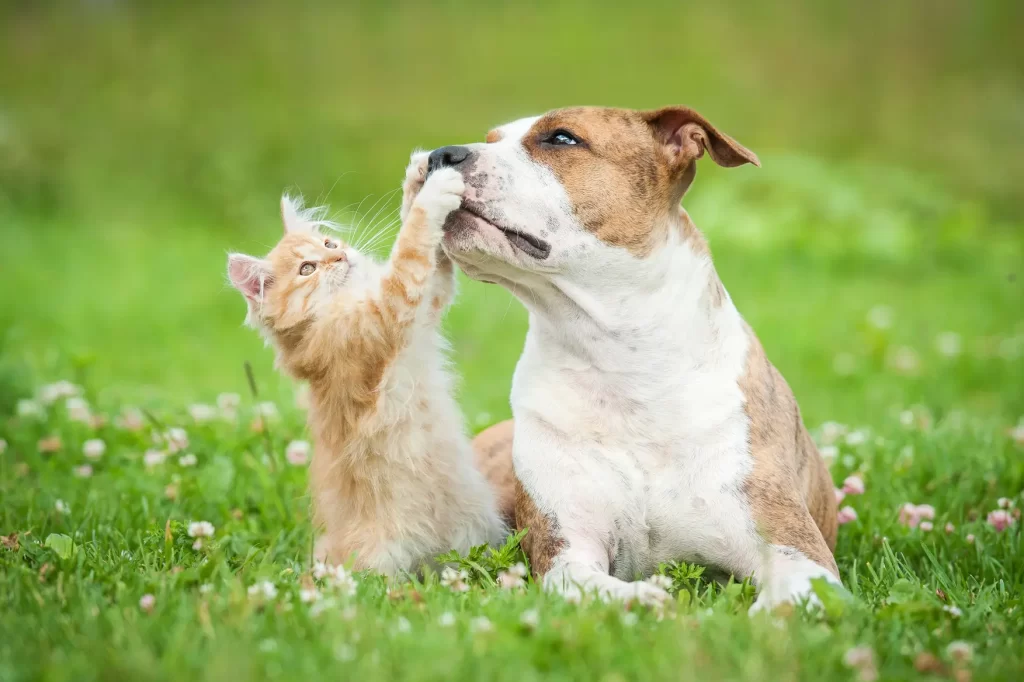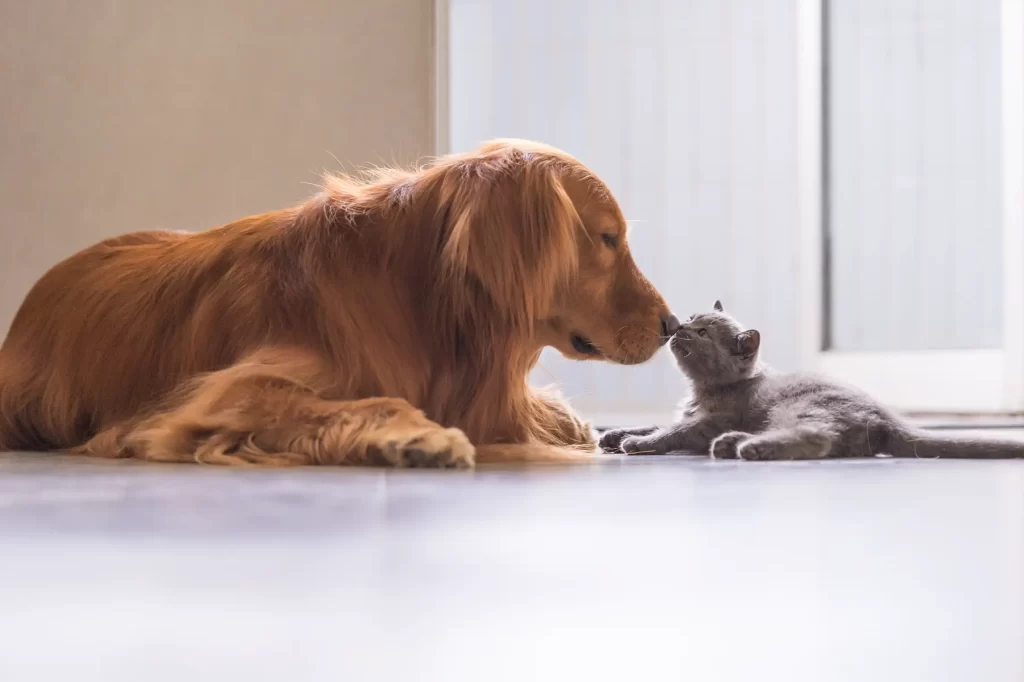Effective Strategies To Stop Dog Aggression Towards Cats
In households where cats and dogs coexist, there’s a prevalent belief that these two species are natural adversaries. However, many pet owners are discovering this doesn’t have to be true. The scenario can pose potential challenges in various situations, such as having a dog and considering getting a cat, having a cat while contemplating adding a dog to the family, encountering a neighbor’s cat, or needing to take a dog to places where cats are present. Aggressive behavior between cats and dogs can disrupt the peace at home, disturb neighbors, and, most importantly, pose risks of injury to both animals.

Identifying signs of aggression in dogs toward cats is crucial for early intervention. These signs may include lunging, pulling, vocalization like snarling or barking, and, in extreme cases, biting. It’s essential to act promptly to prevent harm to the cat and the dog, creating an environment where they can coexist harmoniously.
One effective strategy is introducing a dog and a cat to each other when they are young. Videos and images of puppies and kittens playing or cuddling together showcase the potential for fostering a positive relationship early on. If a dog and a cat meet during their early developmental stages, they are more likely to learn and accept each other’s presence. While introducing them when young is a good start, more is needed. Training is pivotal in ensuring a dog knows not to be aggressive towards cats.
In cases where introducing them at a young age is not feasible, training becomes even more critical. Obedience training, utilizing positive reinforcement, can be highly beneficial and rewarding. Commands like ‘stay,’ ‘sit,’ and ‘wait’ can redirect a dog’s attention away from the cat, fostering a sense of control. Patience and consistent rewards for good behavior are critical elements in the training process.
However, if aggressive behavior has already developed significantly, seeking the assistance of a professional dog trainer might be necessary. These experts can provide tailored guidance to address specific aggression issues in dogs.

If all else fails, physical separation may become the only viable solution. This can involve keeping the dog and cat in separate rooms, using leashes when the cat is around, or employing physical barriers like gates and doors. Unique toys for aggressive chewers can also help distract a dog’s behavior.
Frequently asked questions about dog and cat aggression delve into the reasons behind a dog’s tendency to chase cats, whether dogs perceive cats as prey, and methods to make dogs accept cats. The overarching theme in managing this dynamic is to start early, maintain a calm environment, engage in consistent training, and reinforce positive behavior. By following these steps, households can create an environment where dogs and cats coexist and form meaningful and harmonious relationships.
